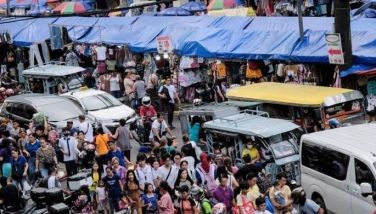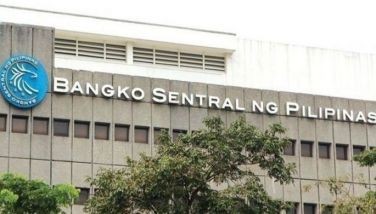‘ Remittances still pillar of Philippines growth’

MANILA, Philippines — Remittances from overseas Filipino workers (OFWs) will continue to fuel consumption and boost the Philippines’ economic resilience, according to British banking giant HSBC.
Aris Dacanay, economist for ASEAN at HSBC, said OFWs are among the Philippines’ strongest “exports,” providing services and manpower to the rest of the world.
“In return, OFWs earn incomes that are usually better than what they could get back home, and a substantial portion of these incomes is remitted to their households to cover their daily expenses,” he said.
Dacanay said OFW remittances remain a pillar of Philippine economic growth.
“This cycle has strengthened the country’s current account, supported the peso, and fueled consumption to the point where consumption became the economy’s pillar for growth,” he said.
According to Dacanay, remittances have represented around 20 percent of the economy’s current account receipts and around nine percent of gross domestic product (GDP) since 2006.
Latest data from the Bangko Sentral ng Pilipinas (BSP) showed personal remittances grew by 2.8 percent to $27.24 billion from January to September versus last year’s $23.82 billion.
Of the total, cash remittances coursed through banks rose by 2.8 percent to $24.49 billion from $23.82 billion.
However, Dacanay noted that the growth of OFW remittances has been weakening.
“Remittances perhaps may have lost their mojo when it comes to supporting the peso, but they haven’t when it comes to fueling consumption,” he said.
The economist explained that the main driver of the slowdown was a drop in the number of Filipinos working abroad.
He noted that the number of OFWs started to decline as early as 2016 or way before COVID came into the picture.
He said the percent of total households with an OFW member has been gradually declining and the pandemic simply accelerated the trend.
Dacanay said OFWs are returning to the Philippines or are immigrating to the country where they work.
“OFWs are deciding to return back to the homeland. And, with the Philippines reporting solid growth numbers in the past decade or so, opportunities in the archipelago are increasing, and we think the general trend of OFW deployment may lessen or at least slow in the years ahead,” he said.
With middle-income jobs burgeoning in the Philippines, he explained that some skilled workers abroad might have decided to pack their bags and take their chances back home.
“Looking closer, OFWs with jobs related to services, sales, crafts and construction were the ones who came back. This was due to the opportunities present in the Philippines: services continue to be the core of the economy, while construction has been booming since the Duterte administration pursued an ambitious infrastructure agenda in 2016,” he said.
- Latest
- Trending





























